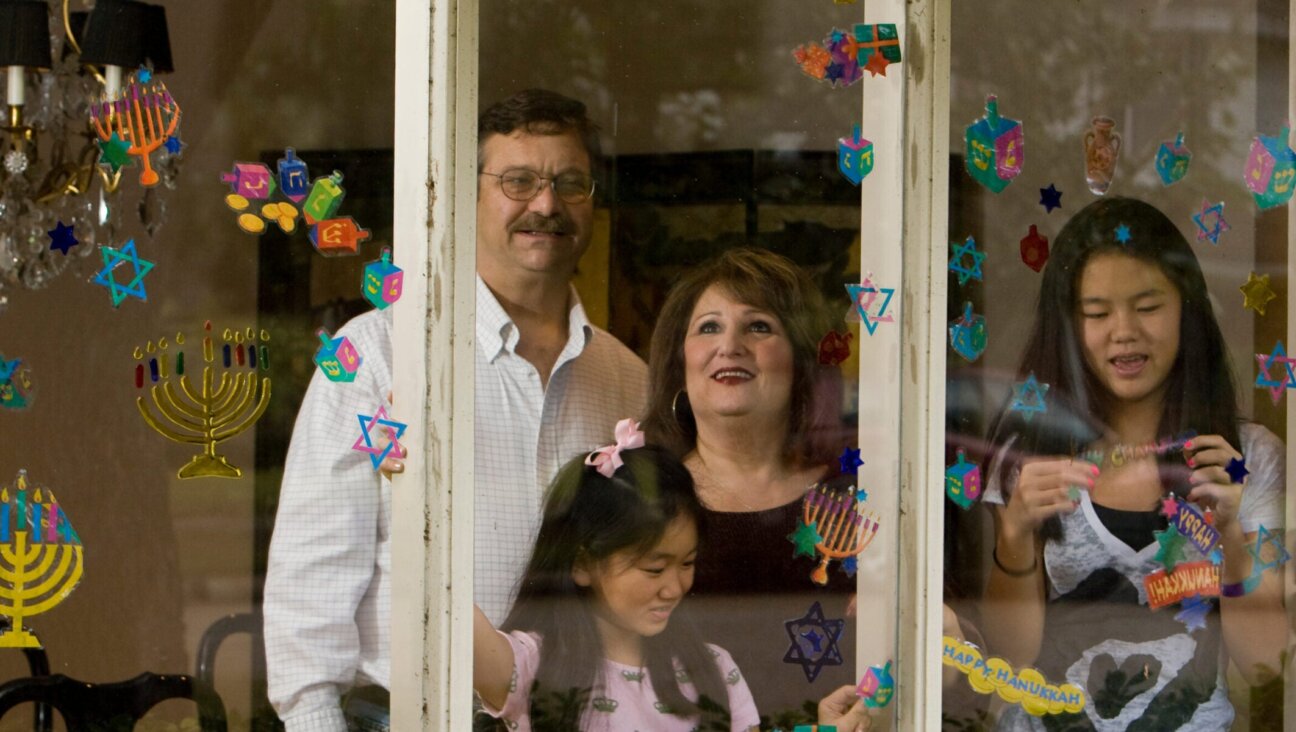The Synagogue as a Veiled Woman

Graphic by Angelie Zaslavsky
The Museum at Eldridge Street, a Lower East Side synagogue that was built in 1887 and holds National Historic Landmark status, recently underwent a quarter-century-long renovation, which culminated with the recent installment of a 16-foot glass window — see it here designed by artist Kiki Smith and architect Deborah Gans.
The synagogue, long an Orthodox congregation for early Eastern European Jewish immigrants to America, had no record of what the original window looked like. So the museum decided to commission something new. Gans spoke recently with The Sisterhood about synagogue architecture in America, designing for gender-segregated congregations, and how the process made her re-think sacred spaces.
Elissa Strauss: Did you have any preconceived notions about synagogue design that informed your design?
Deborah Gans: I was very interested in the fact that there is no one synagogue architecture. This, of course, has scriptural roots — the Temple in Jerusalem being the one true Temple. I love the way in which that precept combined with cultural wandering and iconoclasm has created a kind of elusive architecture. Eldridge Street is identifiable within a category of 19th century eclectic synagogues — a bit Mudéjar mixed with Gothic revival, but also a kind of Americanism.
Kiki and I both love the fact that the surfaces of the synagogue are emblazoned with 5-pointed American flag stars, as if the congregation was equally proud of their Americanism and their Judaism.
The synagogue, in addition to hosting a variety of cultural events, still holds services for an active Orthodox congregation every Friday night. During those services, women sit up in the balcony. Did you take this gender-segregated seating plan into consideration when coming up with the design?
I am not sure we did it on purpose, but the best view of the window is from the balcony. During the process I was conscious of the imagery of veils. There is a trompe l’oeil painting to either side of the ark of a classical apse filled with stars that is then obscured by a painted curtain, just as there is a curtain in front of the Torah. I am sure it has other symbolic readings as well. In Kabbalah there is a female principle — the Shekinah, [which] is described as hidden by veils, just as God is not visible directly. I think of the walls of the synagogue as a veil of stars — a veil both obscuring and defining heavenly spirit. The window simply carries this veil of stars into the literal void of the sky, so the fundamental concept feels feminine to me.
How did the process of designing and installing the window change the way you think about sacred spaces and the ways in which they can affect the community they serve?
Our initial reaction to the synagogue was that it has enough already; it is almost encrusted with ornament. Rather than add yet another motif we wanted to discover something there to use — the star being the obvious choice. The window then continues that logic in many ways. Its rib design and central six-pointed star rehearse the sanctuary domes, so the window is a dome on its side. It has been amazing to observe how this rhyming encourages the eye and mind to see the synagogue afresh, in unanticipated ways. The docents have noticed this, too.
The commission gave us the opportunity to reflect on the structure and meaning of a sacred place, and then to create a reflection of it in a window. I think that this mode of reflection is a way of approaching the sacred. It is something discovered in designing the window that I will take with me.
Much of your previous work as an architect has a social activism component — including design projects for [housing] refugees, schools, and polluted spaces. Did that experience play into your and Smith’s design for the synagogue?
Not specifically or directly. But I take on those projects because they offer a way for architecture to engage culture in all its dimensions. I don’t think of them as marginal extreme situations so much as emerging social conditions that will ultimately impact all of us. The window is a public project that belongs to the contemporary city as well as to the great institution of the synagogue, it has both a congregation and tentacles in the immediate neighborhood of Chinatown, so it is organic and engaged beyond the conventional museum.
Smith and Gans are speaking about their work tonight, November 17, at 6:30 p.m. at the Eldridge Street Synagogue.

















